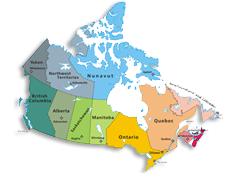Polar bear watching, Manitoba

Churchill, Manitoba
The polar is a bear native to the Arctic Ocean and its surrounding seas. Many of its body characteristics are suited for cold temperatures, for moving across snow, ice, and open water, and for hunting the seals which make up most of its diet.
The majority of the population spends most of the year, from mid-November to mid-July, on the ice of Hudson Bay. Pregnant females are an exception to this, spending from mid-November through to March in maternity dens on land, and then moving to the sea ice with their cubs. From mid-July through to mid-November the entire population is forced onto adjacent coastal lands as the ice disappears. The greatest concentrations during this time period occur between the Nelson River and the town of Churchill.
There is good demand for tourism operations in the Churchill area for access to world-class polar bear viewing opportunities. The number of commercial tour operators and the number of vehicles in this area restricted.
Bear condition and productivity has declined steadily over the last decade. Manitoba lists the polar bear as threatened under The Endangered Species Act, and as protected under The Wildlife Act. Manitoba does not permit the harvesting of polar bears in the province for either recreational or commercial purposes.
The Great Canadian Travel Company offer tourists the opportunity to visit Churchill and see these magnificent animals in the natural habitat.
Every autumn polar bears gather along the water's edge, anxiously waiting for the sea ice to form. Once the bay freezes over, the hungry bears move out onto the ice where they will spend the winter hunting seal. This annual migration provides tourists, photographers and scientists from around the world the unique opportunity to view polar bears up close and personal.
Each summer, the ice melts on Hudson Bay, forcing polar bears ashore. Once on land, without access to seals and other marine mammals, the bears enter a state known as walking hibernation. They live off their fat reserves and spend most of the summer resting and conserving energy.
The bears are intriguing to watch. Each has his or her own personality. Some bears are shy, some are playful, while others are grouchy or aggressive.
Many tourists visit the polar bears via a tundra buggy, an all-terrain vehicle that provides a safe haven for polar bear viewing and photography. The experience is somewhat like going on an Arctic safari, and only two tour operators in the area provide this service, Frontiers North Adventures and Great White Bear Tours. The buggies carry between 10 and 40 people at a time and a typical trip lasts about eight hours.
The optimal time to view the wild polar bears is in October and November.













